|
|
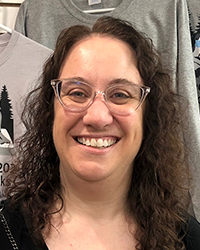 Jen Jen
|
 |

|
|
Stolen
Ann-Helen Laestadius, translated (beautifully!!) by Rachel Willson-Broyles
This book has been out in other parts of the world for some time but was just released in the U.S. on Jan. 31. We got special permission to sell the book early, which would have been SO COOL if we'd held Night-In mid-January as planned! The protagonist of Stolen is Elsa, a daughter of Sami reindeer herders. The Sami are an indigenous people of Norway, Sweden, Finland, and Russia (in Elsa's case, above the Arctic Circle.) We first meet Elsa as a 9-year-old. While visiting her family's reindeer herd alone, she encounters a man illegally slaughtering her family's reindeer. The man threatens Elsa into silence. Elsa's family reports the crime to the police, but it's not taken very seriously. According to the police, such an act is "theft" (which is where the title of the book, Stolen, comes from). As Elsa grows up, her family repeatedly files reports and repeatedly, nothing happens. In addition to the killing of the family's reindeer being a hindrance to their livelihood, there is a spiritual connection for the Sami with reindeer. As Elsa becomes an adult, the practice of Sami reindeer being slaughtered continues. Now that she's older, however, she's not as intimidated by the man who threatened her as a child. I think this book will have great appeal to many readers, but especially Scandinavians! The author herself is of Sámi and of Tornedalian descent, two of Sweden's national minorities. |
| |
|
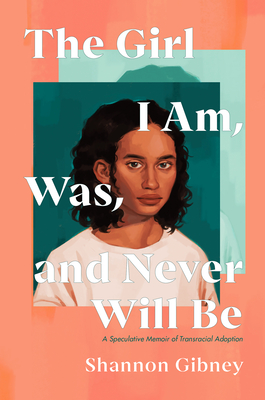 |
|
The Girl I Am, Was, and Never Will Be:
A Speculative Memoir of Transracial Adoption
Shannon Gibney
We had the pleasure of hearing Shannon Gibney speak about this book when she recently visited Park Rapids on a library tour by Minnesota Book Award winning authors. We were so intrigued by what she had to say, we could hardly wait to read the book! Shannon Gibney is adopted. She was born in New York to a young white lesbian and an older black man with some health issues. These parents named the baby Erin Powers and put her up for adoption, feeling she would have the best upbringing by other parents with more stability and resources. The baby was adopted by a white couple, Jim and Susan Gibney, of Michigan and renamed Shannon Gibney. That is one part of the book The Girl I Am, Was, and Never Will Be. Another piece of the book is an imagined narrative, imagining what life would have been like if Shannon had remained in New York as Erin Powers. Most chapters contain headers of either "Shannon" or "Erin.” Some bits of each girl's history are the same. For example, the death of the author's birth father would not have likely been any different if she had stayed in New York with her birth mother. This book is both fiction and non-fiction rolled into one. It's been selected by one of our book groups that is currently undergoing a metamorphosis from "The Current Events Book Group" to the "Topics Explored and Discussed Book Group" (TED for short) in which both fiction and nonfiction books will be read and discussed in exploring different topics—in this case, transracial adoption. We'd love to have you join us—the group is open to both men and women. Email jen@beagleandwolf.com to be added to the email list! |
| |
|
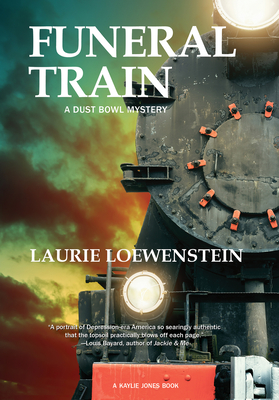 |
|
Funeral Train
Laurie Loewenstein
A number of years ago, I read a book that I greatly enjoyed called Unmentionables, published by a small press. I was delighted to learn that the author, Laurie Loewenstein, is now writing historical mysteries set during the 1930s in Oklahoma. In Funeral Train, a passenger train derails in a small town. The local hospital becomes overrun by dead and injured passengers. One of the seriously wounded is Etha, the wife of the town's sheriff. In addition to discovering the reason for the derailment, the sheriff must do his best to also be a good and attentive husband. In the mix is the issue of race. In the 1930s, train cars were segregated, with blacks in substandard cars. 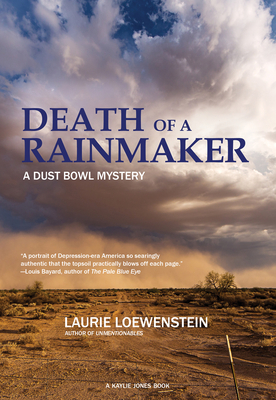 The author has created a great cast of lively, interesting characters and the police work of the 1930s, pre-CSI, was interesting. A word of caution.... Funeral Train is the second book in a series. Someone wiser than I was would (and should) start with the first book in the series, Death of a Rainmaker. The author has created a great cast of lively, interesting characters and the police work of the 1930s, pre-CSI, was interesting. A word of caution.... Funeral Train is the second book in a series. Someone wiser than I was would (and should) start with the first book in the series, Death of a Rainmaker. |
| |
|
 |
|
Poet Warrior
Joy Harjo
If you haven't heard me gush about this book, you've either been on the moon or you need to get your eyes and ears checked.
Poet Warrior by Joy Harjo is a spectacular memoir, interlaced with poetry and song lyrics, as befits a poet who has been named as the United States Poet Laureate. Much of the poetry in Harjo’s Poet Warrior is her own, but also included are poems by a diverse group of poets—from Emily Dickinson to N. Scott Momaday. The poetry included is necessary to move the narrative forward and it’s done masterfully. At the beginning of Poet Warrior, Harjo’s poems about herself refer to the poet as Girl-Warrior and once she comes of age, switches to Poet Warrior. Along with Harjo’s personal history, a helpful and relevant mini history of the area where she grew up in Oklahoma is included. Particularly relevant is the history of The Trail of Tears. Harjo was the oldest child of a hard-working and beautiful mother and an unreliable father. Once her father was out of the picture, Harjo’s mother remarried, to an unkind white man, who had little interest in his wife’s four “mongrel” children. The book is divided into six parts: Ancestral Roots, Becoming, A Postcolonial Tale, Diamond Light, Teachers, and Sunset. As you might expect, the last part, Sunset, refers to Harjo’s later years as a grandmother. I thoroughly enjoyed reading Poet Warrior, so much that I read it all in one day (one very good day!) |
| |
|
 |
|
Not the Camilla We Knew: One Woman's Life from Small-Town America to the Symbionese Liberation Army
Rachael Hanel
Do you remember hearing about the SLA, the Symbionese Liberation Army? If not, it's likely you're familiar with the name Patty Hearst. Patty was kidnapped (and eventually stayed of her own free will) by the SLA in the 1970s. Did you know there was an SLA member from MINNESOTA? (Not to be confused with Sara Jane Olson who was born in California and later moved to St. Paul, MN.) In fact, she went to school at Gustavus for a year. (I asked my Gustie mom if she knew about her, and she confirmed that that info has never been shared in a Gustavus newsletter or engraved on a plaque on campus.) Camilla Hall became involved with the SLA and died in a shootout with the police in Los Angeles in 1974. She was 29 years old. Camilla was shy, artistic, a reluctant lesbian, and the daughter of a Lutheran pastor. She spent a year in school at Gustavus in St. Peter, Minnesota, worked for a year as a social worker in Duluth, Minnesota, and then moved to California and literally got in with the wrong crowd (the really wrong crowd.) The author drew on family materials for the book. Camilla’s parents were willing to share many (but not all, and fair enough) letters that Camilla had written them. In some way, Not the Camilla We Knew is a memoir of the Hall family. Camilla was not the first child of the Halls to die, she was the fourth and the only one who made it to adulthood. The writing is both objective and sympathetic and tells a sad story that you likely never knew about. |
|
|
| |
|
|
|
|
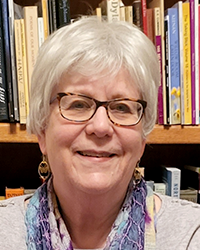 Sally Sally |
 |
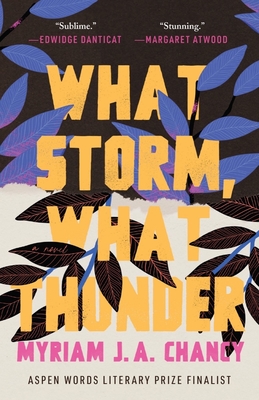
|
 |
What Storm What Thunder
Myriam J.A. Chancy
In 1998, I went to Haiti on a mission trip, and it was life changing. Haiti, the poorest county in the Western Hemisphere, is full of contrasts. Great natural beauty and urban slums; soul-grinding poverty and wealth and privilege; opulent Catholic cathedrals and small voodoo churches.
All this was the backdrop of a 7.0 magnitude earthquake which shook Port-au-Prince, the country’s capital, near the end of a hot day in 2010. In the novel What Storm, What Thunder, Myriam Chancy weaves together the stories of ten of the people affected by that earthquake. The ten were all connected in some way, by ties of family or friendship. Ma Lu, an old woman selling produce in the market; her estranged son, Richard, who abandoned his family years earlier; Anne, the daughter Richard left behind; Sara, driven mad by the deaths of her children in the earthquake; and a number of others. As their stories are told, we see the dysfunction of the government, the prevalence of sexual violence against both men and women, despair, and resilience. The book is beautifully crafted and written.
In the face of the great need in Haiti, the work we did on our mission trip was insignificant. Yet I believe the true value of such trips is to see first-hand what life is like in areas outside our experience: Haiti, Ukraine, India, the Rosebud Indian Reservation, north Minneapolis. In the same way, literature helps us become citizens of the world, sharing the experiences of our fellow humans, no matter how difficult they might be.
If you or a group you’re part of is up to read a book which will open your eyes to the desperate lives of others, What Storm What Thunder may be the book for you. |
| |
|
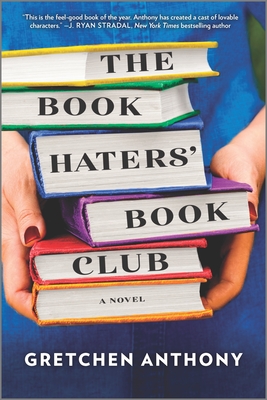
 |
|
The Book Haters’ Book Club
Gretchen Anthony
In contrast to What Storm What Thunder, The Book Haters’ Book Club has little social value but a great deal of entertainment.
The rollicking novel is set in two of my favorite places—a bookstore and Minneapolis. Elliot, the co-owner of Over the Rainbow Bookshop, has recently died. His co-owner and best friend, Irma, has decided to sell the property to a condo development company.
Irma’s daughters, Bree and Laney, and Elliot’s partner, Thom, are both puzzled and outraged with her decision. Each for their own reasons, the three join together to save the bookstore.
Along the way you’ll find book recommendations (Elliot was known for recommending the perfect book for every reader—even self-professed book haters): a cameo appearance by one of the characters in Anthony’s earlier book, Evergreen Tidings from the Baumgartners; humor; and family dynamics run amok.
The book is a feel-good read which is a love letter to booksellers and bookstores. |
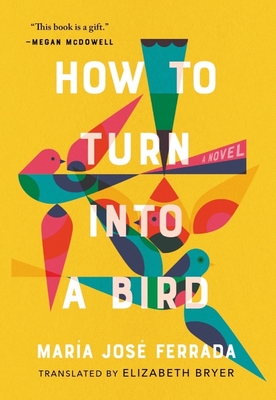 |
|
How to Turn Into a Bird
Maria Jose Ferrada
Maria Ferrada, a Chilean writer, is the author of How to Turn into a Bird, which has been skillfully and sensitively translated into English.
Eleven-year-old Miguel and his mother live in a huge housing project in an unnamed city in Chile. His mother’s sister, Paulina, and her husband Ramon, live in the same project. As the book opens, Ramon has left the job at the PVC factory where he’d worked for ten years. His new job is working for a company which puts up billboards along highways throughout Latin America. He is to guard a billboard for Coca Cola which is close to the housing project. His primary responsibility is to ensure that the lights on the billboard aren’t stolen. Soon, Ramon turns the job into a 24/7 commitment, and actually moves into the billboard. His new home is a narrow platform at the back of the billboard, accessible by climbing up the structure.
The neighbors think Ramon’s crazy, but Miguel and Paulina, together and separately, visit him frequently. Miguel is enchanted with his uncle and his unusual living arrangement.
The story has qualities of a fairy tale or fable. Soon, the attention of the housing project residents turns from Ramon to children from nearby mud shanties and a grandfatherly figure who protects them. This man was to have moved into the project but chose to live on the streets instead. Not even Ramon living up in the billboard, can escape the conflict which develops between the street dwellers and the residents of the housing project.
Miguel, our young narrator, sympathetically describes Ramon and the Bag Man, both of whom live outside the norms of the housing project residents, including Miguel’s mother.
While the book is short and written in a deceptively simple manner, it addresses important themes of societal expectations, acceptance, and conformity. It would be a particularly good choice for a group interested in expanding its horizons by reading a book in translation which is set in another part of the world. |
| |
|
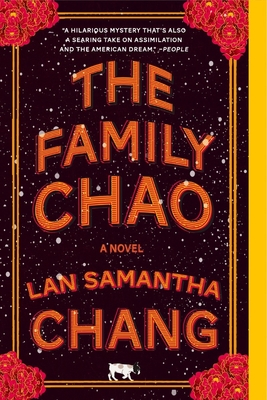 |
|
The Family Chao
Lan Samantha Chang
If you’re in the mood to explore complicated family dynamics, The Family Chao is the book for you.
Leo and Winnie Chang emigrated from China and, through brutally hard work, established the Fine Chao, a restaurant in Haven Wisconsin. When the book opens, members of the family have gathered at the request of Winnie. Leo is a tyrant, and she has left their home to join a nearby Buddhist monastery. Son James has journeyed home from college. His older brother, Ming, has reluctantly come from New York where he’s successful in business. The third brother, Dagau, returned home six years ago. He’s been toiling in the restaurant and hopes Leo will make him a partner. Each family member has complicated relationships with the others.
A good portion of the beginning of the book deals with Dagau’s preparations for the restaurant’s annual Christmas party. He hopes the party will be so impressive that Leo will have to acknowledge his work in the restaurant.
As these things go, the party doesn’t turn out the way Dagau had hoped, and his father humiliates him publicly.
Nor only that, soon after the party Leo is discovered dead, frozen in the restaurant’s freezer, with the key missing from its place inside the freezer.
The remainder of the book deals with the trial of one of the sons for his father’s murder. None of this is a spoiler—it’s on the back cover of the book.
There’s plenty of plot in this book, but it’s essentially character-driven, exploring each member of the Chao family and their relationships with the others. There’s also an exploration of what it means to be an immigrant and the child of immigrants.
This is a book which is sure to generate lots of discussion. |
| |
|
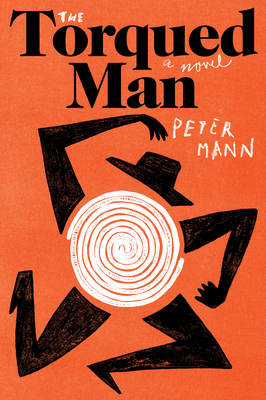 |
|
The Torqued Man
Peter Mann
I’d forgotten how much I like spy thrillers until I read this book. Thanks to Tim for reminding me!
The book is set primarily in Nazi Germany during World War Two. An Irish resistance fighter, Frank Pike, has been released from a Spanish prison in 1940 through the intervention of Adrian de Groot, who is part of German intelligence. Initially, it’s hoped that Pike will help turn Ireland against the English, and secure Ireland’s support for Germany. This never develops, however, and meanwhile, Pike has his own plans. He devises an elaborate plot to assassinate German medical doctors in the belief that this will eventually eliminate Hitler. Two narratives describe their work. One is de Groot’s journal, which candidly assesses the war, his work, and personal struggles. The other is a third person account of Pike’s escapades. Often the two narratives cover the same ground, offering wildly different perspectives.
As is common in this genre, no one is exactly whom they appear to be.
This is great escapist literature. The plot is well constructed and moves right along. The writing is good, and the characters have great appeal. The right group of readers will enjoy picking the plot apart and may also enjoy talking about the role of espionage. |
| |
|
|
|
|
|

Ann
|
|
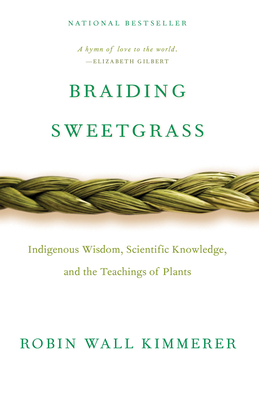
|
|
Braiding Sweetgrass
Robin Wall Kimmerer
Braiding Sweetgrass is a blend of indigenous history, botany, and gratitude for the natural world. Kimmerer is a member of the Citizen Potawatomi Nation, botanist, teacher, and parent. Through the blend of historical information and personal stories, her writing raises awareness of the many blessings of the natural world. This beautifully written book widened my perspective and understanding of how the natural world's relationship between giving and receiving has changed over time. Climate change and other environmental concerns make Braiding Sweetgrass especially relevant today. Readers of Onigamiising, Seasons of an Ojibwe Year by Linda LeGarde Grover and Anton Treuer's books will find abundant food for thought in Braiding Sweetgrass.  |
| |
 |
 |
 |
|
|

Bob |
|
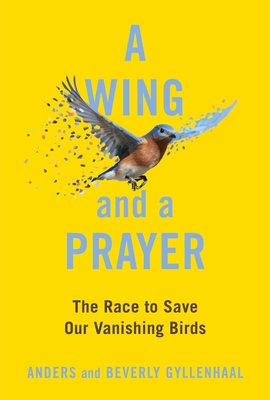
|
|
A Wing and a Prayer
Anders and Beverly Gyllenhaal
When I was a college freshman, I took a required course called Biology I (why the heck does a pre-engineering student need to take biology?) Anyway, I recall one of the topics covered was something like “interconnections.” In short, all biological things are connected. Trees take in carbon dioxide and create oxygen which humanoids use to exist and breathe out carbon dioxide which…well you get the picture.
This book, which I really enjoyed, is a story of how one of these cycles (regarding wild birds) has gotten way out of whack and we face the potential consequences of “no birds.” No purple martins means a ton more mosquitoes at the lake. The authors have put together a lot of facts about what’s happening to wild birds and what’s being done to preserve them.
I had no idea that there were so many people, government offices, and organizations that were and are dedicated to preserving our wild birds. AND how much money is spent around the world to keep these birds from going extinct.
I never thought of a birding book as being exciting. But this one is, and YOU are playing a role in the end of this book. (Good luck on those residuals.)
Note: this book will be released April 18 and may be preordered now.
|
| |
|
|
|
|
|

Brita |
|
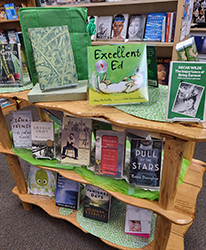 
With March come thoughts of the Irish, St. Patrick's Day, and more. There are so many books to read, stories to learn and relearn. Here are a few recent reads to share or to anticipate.
|
| |
 |
|
Say Nothing
Patrick Radden Keefe
This book reached out to me from the shelves the first time I saw it. When I gave in and picked it up to read, it did not disappoint, but rather set the stage for reading more on the subject. I came of age hearing about "the troubles" in Northern Ireland, ingesting the names; Gerry Adams, Bobby Sands, the Price sisters, Bernadette Devlin, Sinn Fein, Belfast and the events; the bombings, disappearances, hunger strikes, Good Friday Agreement. It all seemed like a long way away, a long time ago—1972—yet as I kept reading, more and more dates, names and places that are part of my American life took shape and new meaning through the powerful recounting of this contemporary history taking place in Ireland and beyond. Patrick Radden Keefe has done a masterful job capturing the tragedy and chronicling the events of this bitter conflict with journalistic integrity and intuitive compassion. I highly recommend this haunting, highly revelatory account of a past that isn't yet past.
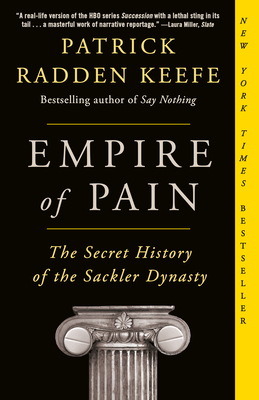 My appetite is whetted for Keefe's latest book, out in paperback last fall, Empire of Pain.
This book is an investigative chronicle, detailing the wealthy Sackler family’s storied philanthropy to the arts and sciences, funded by their sordid marketing of the “miracle drug,” OxyContin, which helped precipitate the devastating opioid epidemic from which more than half a million people have died. Another history not yet past. My appetite is whetted for Keefe's latest book, out in paperback last fall, Empire of Pain.
This book is an investigative chronicle, detailing the wealthy Sackler family’s storied philanthropy to the arts and sciences, funded by their sordid marketing of the “miracle drug,” OxyContin, which helped precipitate the devastating opioid epidemic from which more than half a million people have died. Another history not yet past.
|
| |
|
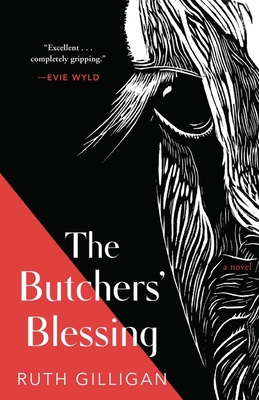 |
|
The Butcher's Blessing
Ruth Gilligan
Gilligan is an Irish novelist and journalist, and the youngest person ever to reach number one on the Irish bestsellers’ list.
Gilligan's intense portrait of rapidly changing rural Ireland in the 1996’s grabs the reader right from the get-go. It unfolds primarily from the viewpoints of the wives, sisters, and daughters of a sect of ritual butchers who leave their families for eleven months of the year to travel throughout the Irish farm country faithfully carrying on an ancient Irish custom requiring that eight men be present at every cattle slaughter, with eight different hands touching the animal as it passes from this life to the next. Ancient rituals often fare poorly when confronted with modern sensibilities, disease outbreaks, and economics. This tale is dark, full of twists and underlying mystery, yet populated by the eternal struggles and emotions of love, faith, betrayal, and anguish. |
| |
|

|
|
Angela's Ashes
Frank McCourt
One last thought on an Irish reading list—if you haven't read Angela's Ashes, just do it. |
|
|
|
| |
|
|
|
|
|

Hannah
|
|

|
|
The Library Book
Susan Orlean
Orlean, author of The Orchid Thief, spent years researching the Los Angeles Central Library and libraries in general. It started when she found out about the devastating fire that destroyed millions of books and much of the building’s infrastructure in 1986. Few people, even library lovers, knew about the fire because the day it happened the nuclear accident at Chernobyl bumped everything else off of the national news. This is a fascinating book, both because the subject is so rich and because Orlean is such a fine writer. Readers feel like they’ve gotten to know her; and everyone who cares about books or libraries as community resources will be enthralled.
|
| |
|
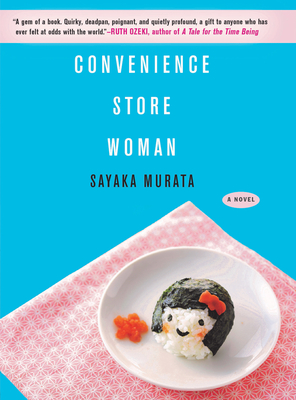
|
|
Convenience Store Woman
Sayaka Mutata
This is a (literally) little novel about a (figuratively) small woman who has worked at a convenience store for 18 years. She doesn’t understand other people, the rules of behavior and how to present herself. As a child this got her into trouble, so she learned to keep her mouth shut and soldier on. When she was half way through college she started a part time job in a convenience store and discovered that this is a world where she knows what to do at all times. And by studying the mannerisms and dress of her coworkers she feels she can fit in. However, her loving family and the one friend she’s managed to make are pressuring her to fit into society’s expectations, to get married and/or to get a proper job. The dilemma provides suspense while you get to experience a totally different way to view the world. |
| |
|
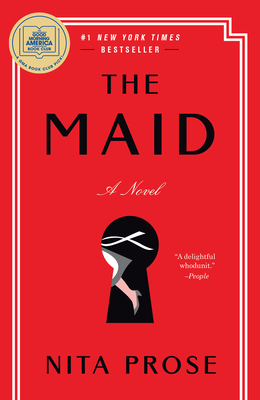
|
|
The Maid
Nita Prose
I had no idea when I started this that The Maid, like Convenience Store Woman, is about a woman on the autism spectrum who loves her job because it has clear rules that allow her to excel and to know how to interact with others while on the job. However, The Maid is a classic whodunnit, a murder mystery with flair. The author was inspired by an incident in a hotel when she realized how little she noticed the maid as a person. She set out to create the imaginative environments and characters she has enjoyed playing Clue. Her novel is quite fun. I didn’t guess the murderer but enjoyed the enfolding story and, especially, being in the title character’s mind. |
|
| |
|
|
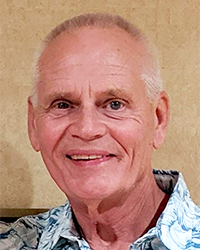
Lee |
|
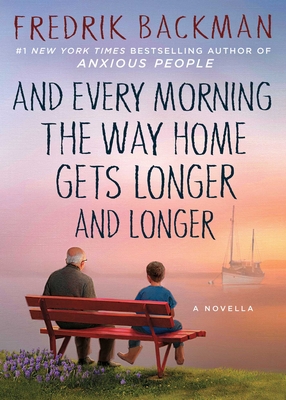
|
 |
And Every Morning the Way Home Gets Longer and Longer
Fredrik Backman
This is a novella of under 100 pages, but it punches above its weight.
We are with a man who is suffering from Alzheimer's disease. And with his grandson and his son and his deceased wife. There are regrets, but he has probably done as well with his life as any of us can do and probably better than many of us.
How do you say goodbye when your mind wears out before your body does?
It really is a wonderful book about family and caring, and a good reminder about the things that are most important. |
| |
|
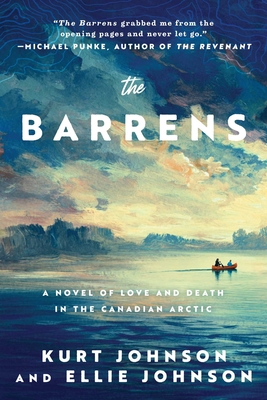 |
|
The Barrens
Kurt and Ellie Johnson
Lee and Holly attend Brown University. Holly once canoed the Theron River through the Barrens of subarctic Canada, and she convinces her girlfriend Lee that this is an experience that they must share. (If you have read The Twenty-Ninth Day by Alex Messenger, you will recognize the territory.)
Soon after the journey begins, Holly steps off a cliff while taking a selfie. Lee is able to find her and pull her from the water, but Holly is comatose. They have no satellite phone, and their rescue beacon has been made inoperable by the accident. Lee, a canoeist with minimal experience, must continue on and hope to encounter other people or eventually paddle alone the hundreds of miles to their destination.
Much of the narrative is of Lee telling stories to Holly ... of meeting Holly, of becoming lovers, of growing up off-the-grid in Nebraska in a childhood fraught with instability, and of the life that they will have together. These stories are wonderfully written and woven together, and Lee proves to be a formidable woman.
This book by a father-daughter team is a finalist for the 2023 Minnesota Book Awards in the category of novels. |
| |
|
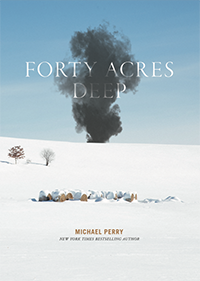 |
|
Forty Acres Deep
Michael Perry
Harold is on his farm, in his house, his dead wife on the bed beside him. The snow keeps falling, providing a sense of beauty and new beginnings.
But winter is cold. The snow is unrelenting. And Harold is hanging on while mercilessly pondering the nature of his failings.
There is grim humor here and great darkness, but ... perhaps ... a glimmer of hope.
This is a short book (119 pages) that is wonderfully written. I don't think you need to know anything about the author (Michael Perry) to appreciate it, but ... if you are so inclined ... I would suggest starting with The Jesus Cow. Or maybe Truck. Or ... 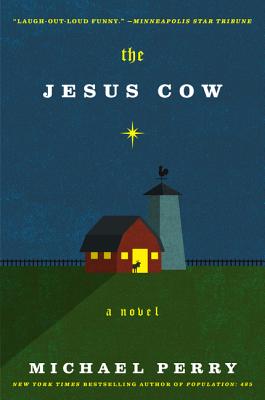 |
| |
|
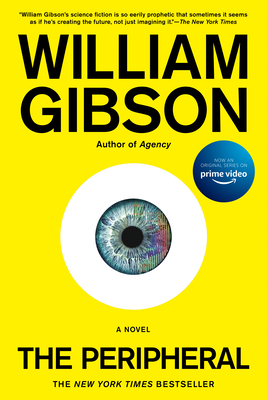 |
|
The Peripheral
William Gibson
The Peripheral is the first book in William Gibson’s Jackpot trilogy, and the basis for the television series by the same name. Book 2 is Agency, and the third book has not yet been released.
Flynne Fisher lives in a near-future rural America, scratching out a living at a 3D printshop. Her brother Burton is a disabled veteran who served in a Haptic Recon unit and has been working security in what seems to be a game prototype. Flynne subs in for him and witnesses a murder, which seems awfully real to her.
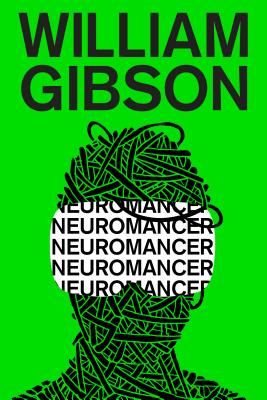 Wilf Netherton lives in London about 70 years later, where the “haves” can mostly enjoy life and the “have-nots” have mostly died off. Yet it turns out that the people of his age must turn to the people of Flynne’s for their survival. Wilf Netherton lives in London about 70 years later, where the “haves” can mostly enjoy life and the “have-nots” have mostly died off. Yet it turns out that the people of his age must turn to the people of Flynne’s for their survival.
It takes a bit of time for the pieces to click into place for the reader, but the author creates a world (or two) that can help us recognize many things about our own world and our future.
This is a fine novel, but I am still most in love with his first novel, Neuromancer.
|
| |
|
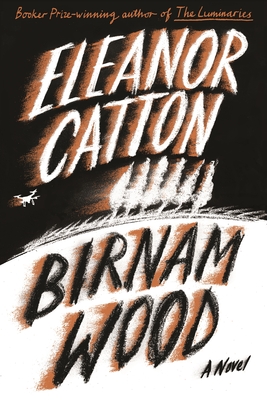 |
|
Birnam Wood
Eleanor Catton
Several years before the novel opens, Mira Bunting founded a gardening group (Birnam Wood) that has engaged in the extra-legal planting of crops in unused and unnoticed spaces ... empty lots, roadsides, abandoned buildings, unused gardens. The crops harvested are used by the group members, sold, or donated. As one might expect, it has never shown a profit, which especially strains the relationship between Mira and Shelley, a co-founder of the group.
A landslide has cut off the road leading past a sizeable and seemingly abandoned farm, and Mira has decided that this would be the perfect place to finally create a commune that would be financially viable. The farm, though, has also attracted the attention of an American billionaire who plans to build a survivalist bunker there. When he finds Mira there, he suggests that his plans do not necessarily mean that her plans must end, and he may even be able to help get Birnam Wood on a solid financial path.
The author introduces a host of characters who are caught up in this, each with their own motives (mostly less than truthful) and actions that sweep everyone into a conclusion that few readers will anticipate. Birnam Wood is a meticulously plotted psychological thriller that makes for some great reading.
"Pride goes before destruction, a haughty spirit before a fall." (Proverbs 16:18)
Note: this book will be released March 7.
|
| |
|
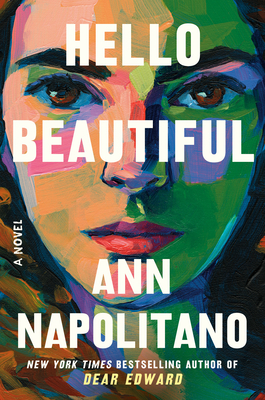
|
|
Hello Beautiful
Ann Napolitano
William Waters finds that basketball can give him something like a family, since his parents have nothing left for him after the death of his sister. On a college scholarship, he meets Julia Padavano and her family. They marry and have a daughter, but William cannot escape the darkness and is saved only by his friend Kent and Julia’s sister.
The four Padavano sisters bring some Little Women reflections to the novel. And occasionally it seemed like it might all veer off into nothing more than a soap opera. (My apologies to soap opera fans.) In the end, though, it is a story of what love and family can make possible.
Note: this book will be released March 14
|
|
| |
|
| |
|
|
|
|

Tim
|
|
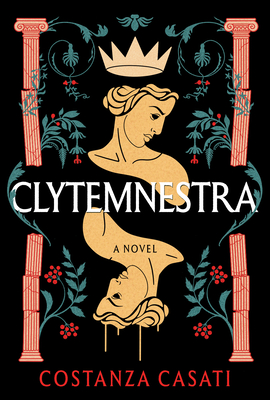
|
|
Clytemnestra
Costanza Casati
"You can't have Justice and everyone's approval."
One of the most uncomfortable truths of Greek Mythology is the fact that one NEVER meets with perfection. Not in the Gods, not in people, not in the world. Yet the Greek consciousness is obsessed (definition - to haunt or trouble the mind) with gaining the ideals of perfection, goodness, beauty, justice, and truth. This noble struggle, in the face of certain unattainability, provides equally endless possibilities in drama and storytelling to explore this human aspiration and, most importantly, its complexity. Casati's Clytemnestra is an entertaining marvel of insight into one of Greek Mythology's lesser-known women. Clytemnestra is most known for her rage. How did she come to embrace her rage and direct it so savagely at her husband, Agamemnon? Casati tells the complex layered story of Clytemnestra's life as I've never heard it told before, as that of a powerful woman's struggle for personal dignity/integrity, and to do what is right and just. This is an excellent book!
Note: this book will be released in paperback on
March 7.
|
| |
|
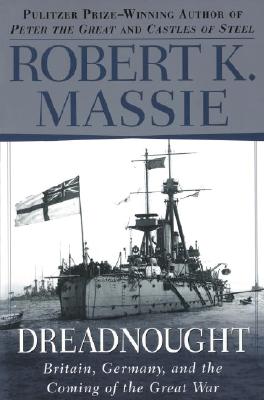 |
|
Dreadnought
Robert K. Massie
I've been interested in the huge, vastly expensive warships so popular with the navies of the early 20th century. It seems odd that these huge metal beasts could float, either on water, or in the imagination, as representations of a nation's military might and prestige. They were the I.C.B.M. systems of that age. Massie has written this Pulitzer Prize winning 'dreadnought' of a book that lays before the reader the politics and personalities of an age moving steadily towards the inexorable cataclysm of World War I. For a serious reader of History, this book is a must.
|
| |
|
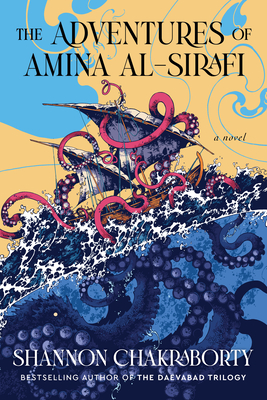
|
|
The Adventures of Amina Al-Sirafi
Shannon Chakraborty
This book was just fun! A retired female pirate is lured onto a quest to retrieve an abducted scholar and magician, and finds herself confronting her own past, a wicked wizard, and the unseen world of demons and sorcery. Sort of a Sinbad the Sailor run amok! Set in the Arabian Seas, around the time of the Crusades, I found it a perfect escape from the spell of deep winter. Want to get away to warm tropical seas and some serious adventure... even some magic? Well, here’s your ticket! |
|
|
Would you like to be a guest reviewer?
Email Sally at sally@beagleandwolf.com |
| |
|
|
|
|
|
— page top —
|
|








 Sally
Sally












 The author has created a great cast of lively, interesting characters and the police work of the 1930s, pre-CSI, was interesting. A word of caution.... Funeral Train is the second book in a series. Someone wiser than I was would (and should) start with the first book in the series, Death of a Rainmaker.
The author has created a great cast of lively, interesting characters and the police work of the 1930s, pre-CSI, was interesting. A word of caution.... Funeral Train is the second book in a series. Someone wiser than I was would (and should) start with the first book in the series, Death of a Rainmaker. 









 My appetite is whetted for Keefe's latest book, out in paperback last fall, Empire of Pain.
This book is an investigative chronicle, detailing the wealthy Sackler family’s storied philanthropy to the arts and sciences, funded by their sordid marketing of the “miracle drug,” OxyContin, which helped precipitate the devastating opioid epidemic from which more than half a million people have died. Another history not yet past.
My appetite is whetted for Keefe's latest book, out in paperback last fall, Empire of Pain.
This book is an investigative chronicle, detailing the wealthy Sackler family’s storied philanthropy to the arts and sciences, funded by their sordid marketing of the “miracle drug,” OxyContin, which helped precipitate the devastating opioid epidemic from which more than half a million people have died. Another history not yet past. 

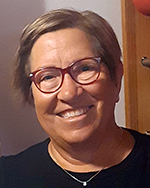









 Wilf Netherton lives in London about 70 years later, where the “haves” can mostly enjoy life and the “have-nots” have mostly died off. Yet it turns out that the people of his age must turn to the people of Flynne’s for their survival.
Wilf Netherton lives in London about 70 years later, where the “haves” can mostly enjoy life and the “have-nots” have mostly died off. Yet it turns out that the people of his age must turn to the people of Flynne’s for their survival.

